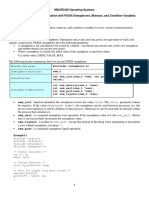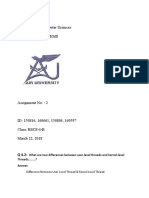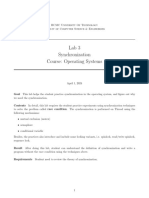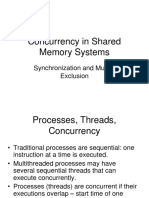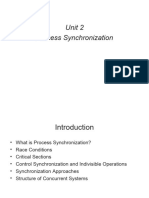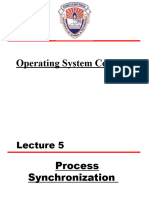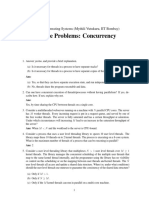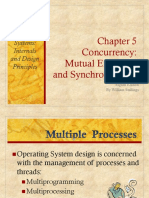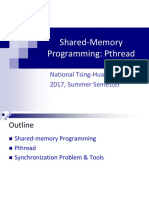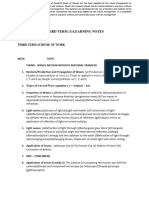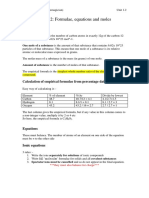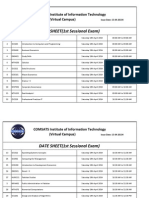0% found this document useful (0 votes)
29 views17 pagesUnit 2 Lecture 32 - Synchronization Examples
The document provides an overview of synchronization mechanisms in various operating systems, including Windows, Linux, Pthreads, and Solaris. It details specific synchronization techniques such as mutex locks, semaphores, and condition variables, along with their implementation and usage in each system. The content is adapted from multiple sources and aims to educate on the principles of operating system synchronization.
Uploaded by
ayesha45583Copyright
© © All Rights Reserved
We take content rights seriously. If you suspect this is your content, claim it here.
Available Formats
Download as PDF, TXT or read online on Scribd
0% found this document useful (0 votes)
29 views17 pagesUnit 2 Lecture 32 - Synchronization Examples
The document provides an overview of synchronization mechanisms in various operating systems, including Windows, Linux, Pthreads, and Solaris. It details specific synchronization techniques such as mutex locks, semaphores, and condition variables, along with their implementation and usage in each system. The content is adapted from multiple sources and aims to educate on the principles of operating system synchronization.
Uploaded by
ayesha45583Copyright
© © All Rights Reserved
We take content rights seriously. If you suspect this is your content, claim it here.
Available Formats
Download as PDF, TXT or read online on Scribd
/ 17









